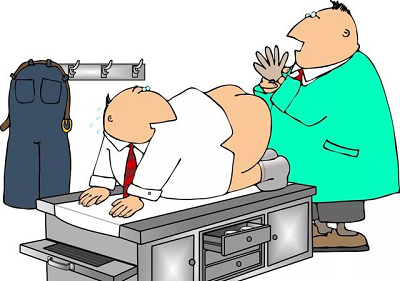Why Do You Experience Pain During Prostate Massage?
Prostate massage is both a therapeutic and diagnostic method.

Prostate massage is an invasive test generally advocated for patients with chronic prostatitis. Weekly prostate massage can help discharge prostate fluid and inflammatory substances, thus relieving the accumulation of prostate secretions, improving local blood circulation, and promoting the absorption and subsidence of inflammation.
Also, prostate massage is a diagnostic method. By obtaining prostate fluid through prostate massage and examining it, the doctor can learn the specifics of the prostate fluid and can also identify pathogens through bacterial cultures.
How exactly does this massage work?
First, the doctor usually puts the patient in a standing, supine, or lateral position. Then, with the anus exposed, the doctor puts on a glove or finger cuff, applies petroleum jelly or liquid paraffin to the end of the finger, and slowly inserts it into the rectum through the anus. The finger is used to diagnose the size, hardness, tenderness, and smoothness of the prostate, the presence of hard nodules, the symmetry of the bilateral lobes, and the presence of a central sulcus.
The prostate massage is performed by pressing the fingers from the outside to the inside in a downward sequence and then squeezing along the central groove from top to bottom several times. The doctor collects prostate fluid from the external urethral opening for microscopic examination or bacterial culture.
Therefore, this means of examination is usually painful. The pain level may vary from mild to severe depending on the patient and the severity of the condition being treated. When massaging the prostate, this procedure can cause rectal pain and a burning sensation. It can also cause a feeling of pressure in the lower abdomen and groin area.
So, what are the factors that affect the pain during prostate massage?
1. Experience of the practitioner. The experience of the practitioner performing the massage can affect the pain of the massage. Experienced practitioners are able to perform massages more effectively and with less discomfort for the patient.
2. Techniques used. Doctors may use different techniques for prostate massage. It is important to discuss with your doctor which technique is best for you.
3. Degree of relaxation. Relaxation is the key to reducing prostate massage pain. It is essential to make sure you relax before, during, and after your massage. Breathing deeply and focusing on relaxing your body can help reduce pain.
4. Lubricant used. Using a lubricant can help minimize the discomfort of prostate massage. Water-based lubricants are usually recommended because they are safe and easy to use.
5. Heat or cold therapy used. Applying heat or cold therapy to the area before or after a massage can help reduce pain. Heat therapy can help relax the muscles and reduce tension. And cold therapy can help reduce inflammation and swelling.
6. Medication used. Taking medications before and after a massage can help reduce pain. Nonsteroidal anti-inflammatory drugs (NSAIDs) such as ibuprofen help reduce inflammation and pain. Failure to use medication may also result in increased pain.
Prostate massage is a safe and effective treatment for chronic prostatitis, but prostate massage is difficult to operate and master. If a massage is performed by someone who is not specialized enough, the irritation that forms on the prostate can be detrimental to recovery. For this reason, it is important to talk to your doctor before undergoing any prostate massage, and your doctor can help you determine if prostate massage is right for you.
It is worth noting that prostate massage is always just an adjunct to the treatment of prostatitis and cannot completely cure the root cause of the disease. In contrast, the TCM concept of evidence-based treatment effectively treats prostatitis.
Diuretic and Anti-inflammatory Pill, a traditional Chinese medicine researched under the guidance of this concept, which can eliminate inflammation from the root and restore the function of the prostate. It is a good choice for chronic prostatitis patients in addition to prostate massage. It does not irritate the patient's prostate and produce side effects.
Recommended Readings:
Prostate Massage Series 2- Massage Methods for Prostate Health
What Kind of Patients Are Suitable for Prostate Massage?
Can Men Do Prostate Massage at Home by Themselves? Do It in Four Steps



